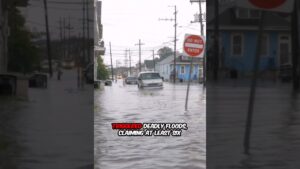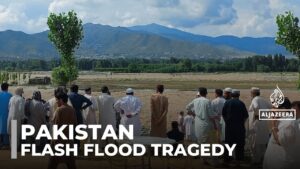
🌊 Top 5 Flood Disasters in History: A Wake-Up Call for the World 🌍
Floods are among the most devastating natural disasters, capable of wiping out entire communities in mere hours. History has witnessed catastrophic floods that not only reshaped landscapes but also left scars on the lives of millions. Here are the Top 5 Flood Disasters that remind us of nature’s fury—and why we must act now to prevent such tragedies.
🚨 Flood Awareness Saves Lives
Floods may be natural, but their damage is often preventable. Here’s how we can protect our communities:
1. Stay Informed: Monitor weather alerts and flood warnings.
2. Build Smart: Use flood-resistant construction and elevate homes in flood-prone areas.
3. Plan Ahead: Prepare an evacuation plan and emergency kit.
4. Protect Nature: Wetlands and forests naturally absorb excess water—conserve them.
5. Support Action: Demand climate action and stronger disaster policies from your leaders.
🌎 Flood disasters are not just history—they’re a warning for the future. By learning from the past and taking proactive steps today, we can build a safer, more resilient world for tomorrow.
✅ Suggestions to Prevent Floods and Minimize Damage
🏡 1. Improve Urban Planning and Drainage Systems
Construct efficient drainage systems to quickly carry away excess rainwater.
Regularly clean and maintain gutters, drains, and sewage systems to prevent blockages.
Avoid building on natural waterways and floodplains.
🌳 2. Protect and Restore Natural Ecosystems
Preserve wetlands, forests, and mangroves—they absorb rainwater and slow runoff.
Plant more trees to reduce soil erosion and improve water retention.
Avoid deforestation and promote sustainable land use.
🏗 3. Build Flood-Resistant Infrastructure
Elevate homes and critical buildings in flood-prone areas.
Construct levees, dams, retention basins, and flood barriers where necessary.
Use permeable materials in sidewalks and roads to allow water absorption.
🌧 4. Invest in Early Warning Systems
Install flood detection and monitoring systems in high-risk zones.
Use mobile alerts, sirens, and community networks to inform residents early.
Support scientific research to improve flood prediction models.
📚 5. Community Education and Emergency Preparedness
Train communities on evacuation plans and flood response.
Encourage the creation of local disaster response teams.
Educate children and families on how to prepare emergency kits.
🌍 6. Adapt to Climate Change
Support policies aimed at reducing carbon emissions and global warming.
Incorporate climate risk assessments into development plans.
Advocate for international cooperation on water resource management.
🧱 7. Promote Sustainable Agriculture and Land Use
Use contour farming and terracing to slow water runoff.
Maintain vegetation cover on farmlands.
Avoid overgrazing and land degradation.
🚨 Remember: Floods Can Happen Anywhere
Whether you live in a city, village, or mountainside, flood risks are increasing due to climate change and urbanization.
#shorts #disaster #flood #natureshots #dangerous
source



